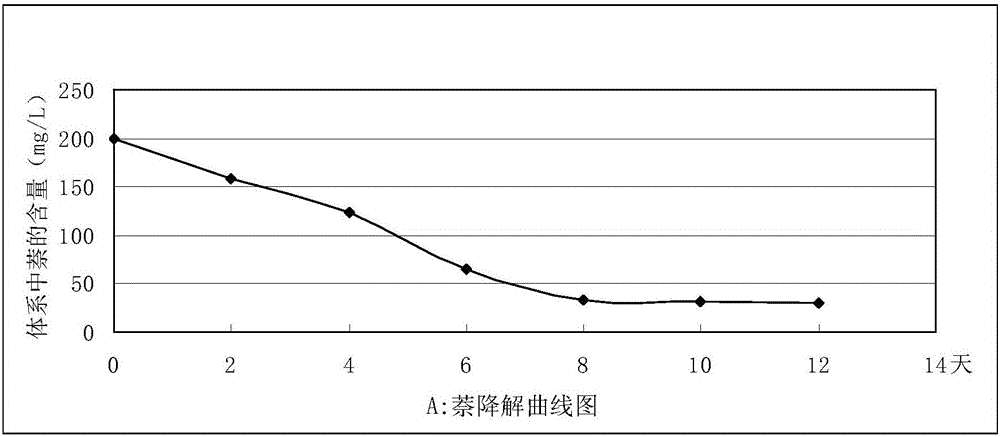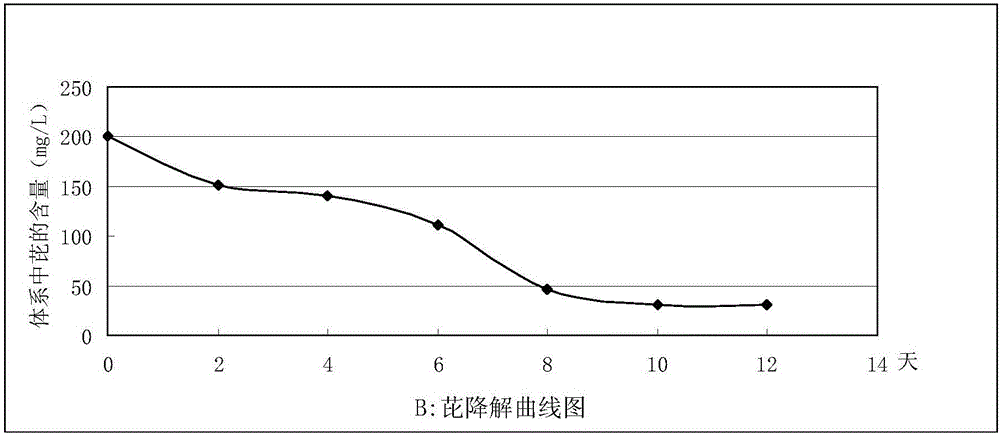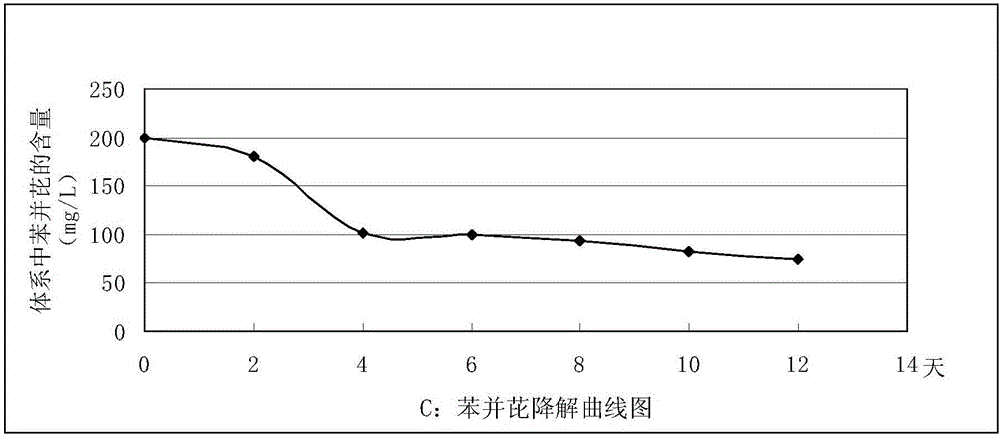Bacterial strain capable of degrading polycyclic aromatic hydrocarbons and application of bacterial strain
A technology of polycyclic aromatic hydrocarbons and bacterial strains, applied in the field of bioengineering, can solve problems such as application limitations, and achieve the effects of improving universality, good degradation ability, and rapid degradation ability
- Summary
- Abstract
- Description
- Claims
- Application Information
AI Technical Summary
Problems solved by technology
Method used
Image
Examples
Embodiment 1
[0023] Isolation and screening of strain Citrobacter freundii L2-14 capable of degrading polycyclic aromatic hydrocarbons
[0024] Collect surface soil samples at a distance of 15cm below the surface from a solid waste dismantling site, add 1mL acclimation solution per 1g of soil sample (the ratio of soil sample: acclimatization solution is 1g: 1mL) and add acclimatization solution for acclimatization and cultivation. The culture conditions are temperature 25°C, rotation speed 100rpm, time 72h. Wherein, the formula of above-mentioned domestication liquid is:
[0025] (NH 4 ) 2 SO 4 : 2g / L; MgSO 4 : 0.2g / L; K 2 HPO 4 : 4g / L; KH 2 PO 4 : 6g / L; polycyclic aromatic hydrocarbons (naphthalene, phenanthrene, fluoranthene, pyrene, benzanthracene and benzopyrene) mixture 200mg / L, wherein, naphthalene, phenanthrene, fluoranthene, pyrene, benzanthracene and benzopyrene The addition amount can be the same amount or different amounts, mainly because the addition of these polycycli...
Embodiment 2
[0032]The Citrobacter freundii L2-14 strain was used to degrade polycyclic aromatic hydrocarbons
[0033] Take this strain Citrobacter freundii L2-14 and inoculate it in LB solid medium for activation; then select a single colony and inoculate it in 5 mL of LB liquid medium for cultivation, and cultivate it at a temperature of 28°C and a rotational speed of 100rpm until the bacterial liquid OD 600 ≈1; then, inoculate the bacterial solution in the inorganic salt glucose medium according to the inoculum amount of 2%, and cultivate it to the OD of the bacterial solution at a temperature of 28°C and a rotation speed of 100rpm 600 ≈1; Among them, the formula of inorganic salt glucose medium is: peptone: 5g / L; glucose: 10g / L; (NH4) 2 SO 4 : 2g / L; MgSO 4 : 0.2g / L; K 2 HPO 4 : 4g / L; KH 2 PO 4 : 6g / L, after the cultivation, the corresponding bacterial liquid was obtained.
[0034] Centrifuge the above bacterial solution with a centrifuge at 10,000 r / min for 5 minutes, remove the...
PUM
 Login to View More
Login to View More Abstract
Description
Claims
Application Information
 Login to View More
Login to View More - R&D
- Intellectual Property
- Life Sciences
- Materials
- Tech Scout
- Unparalleled Data Quality
- Higher Quality Content
- 60% Fewer Hallucinations
Browse by: Latest US Patents, China's latest patents, Technical Efficacy Thesaurus, Application Domain, Technology Topic, Popular Technical Reports.
© 2025 PatSnap. All rights reserved.Legal|Privacy policy|Modern Slavery Act Transparency Statement|Sitemap|About US| Contact US: help@patsnap.com



